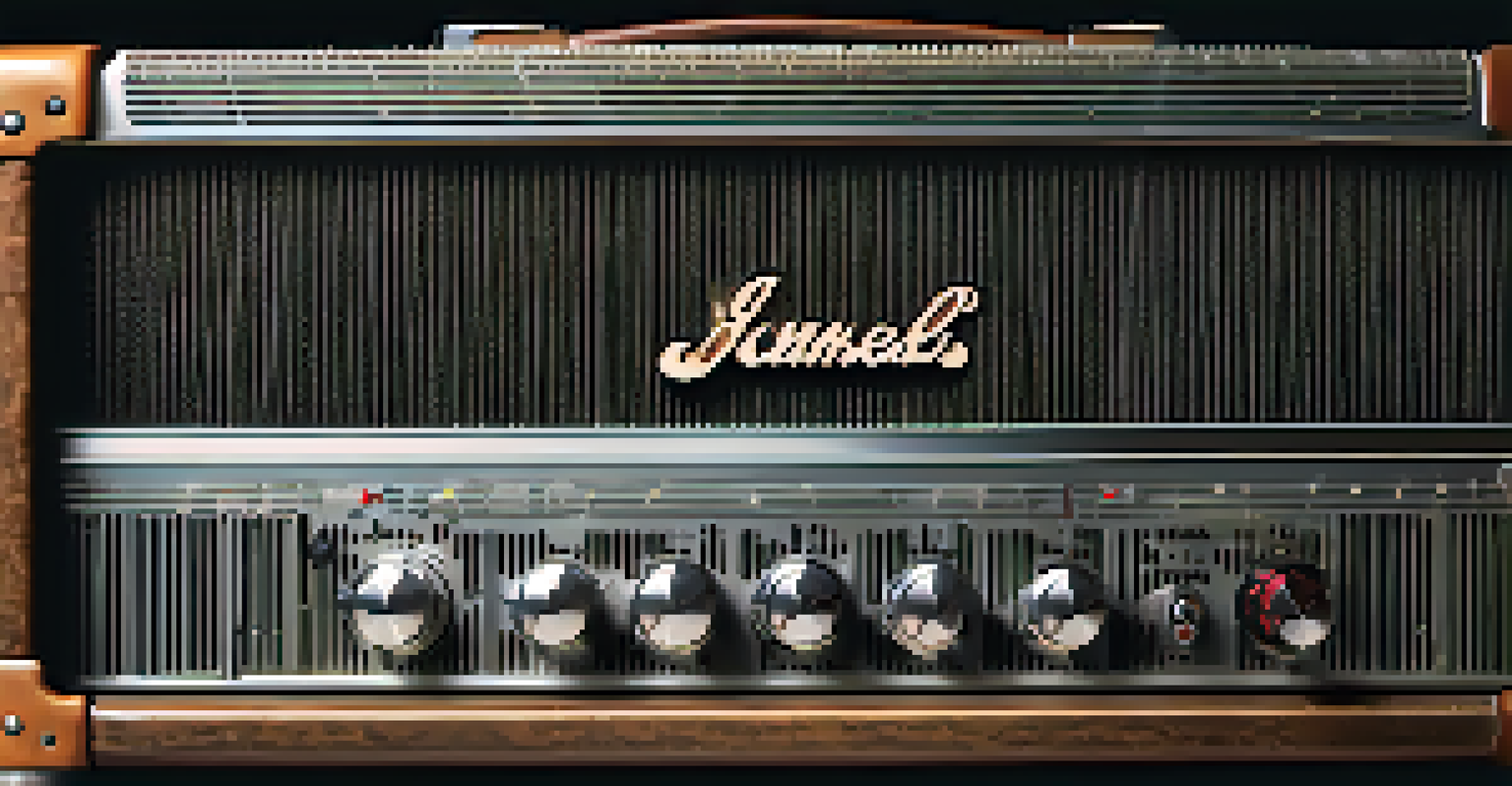Live Sound Troubleshooting: Common Issues for Guitarists

Understanding the Basics of Live Sound for Guitarists
When it comes to live sound, having a solid grasp of the basics is crucial for guitarists. Understanding how sound travels and the role of each component in your setup helps you troubleshoot effectively. Think of your sound system as a chain, where each link's strength affects the overall performance.
The guitar is a small orchestra. It is polyphonic. Every guitar is a different color, a different sound, a different voice.
In a live setting, the guitar, amplifier, and PA system must work in harmony. If one piece is out of sync, it can mean disaster for your performance. Recognizing how your gear interacts allows you to pinpoint issues quickly.
Also, consider the environment where you're playing. Factors like room acoustics and audience size can significantly influence your sound. Being aware of these variables can help you anticipate potential problems before they arise.
Common Sound Issues: No Sound from the Guitar
One of the most alarming issues a guitarist can face is complete silence during a performance. If your guitar isn't producing sound, start with the basics: check your connections. Loose cables or faulty jacks are often the culprits behind this frustrating problem.

Next, inspect your amplifier settings. Is it turned on? Are the volume knobs at an appropriate level? Sometimes, it’s the simplest solutions that we overlook in the heat of the moment.
Mastering Live Sound Basics
Understanding how your guitar, amplifier, and PA system interact is essential for troubleshooting and delivering a great performance.
Finally, if you're using effects pedals, ensure they are properly powered and connected. A dead battery or faulty power supply can lead to a loss of sound, so keep a spare on hand to avoid any hiccups during your set.
Dealing with Unwanted Feedback: Causes and Solutions
Feedback can be a guitarist's worst nightmare, often manifesting as a high-pitched squeal that disrupts the performance. This typically occurs when the microphone picks up sound from the speakers, creating a feedback loop. Understanding how to position your equipment can help mitigate this issue.
In the studio, you have a lot of control over the sound. But in live music, you have to deal with the environment, the audience, and all the unpredictable factors.
To prevent feedback, ensure your microphone is positioned away from the speakers. Additionally, adjusting the EQ settings on your mixer can help eliminate problematic frequencies. A bit of trial and error here can go a long way.
Using directional microphones can also reduce the chances of feedback. These mics pick up sound primarily from one direction, making it easier to control the sound environment on stage.
Addressing Volume Imbalance: Balancing Your Sound
A common issue in live sound is volume imbalance, where certain instruments overpower others. As a guitarist, it’s essential to find the right balance to ensure clarity in your performance. Start by adjusting the levels on your mixer, focusing on the relative volumes of your guitar and other instruments.
Don't hesitate to communicate with your sound engineer or bandmates. They can offer valuable feedback on how your sound blends with the overall mix. Teamwork is key in achieving that perfect volume balance.
Common Sound Issues Explained
Addressing typical problems like no sound, feedback, and distortion will help you maintain clarity and quality during your set.
Lastly, consider using in-ear monitors, which can help you hear yourself better without cranking up the volume. This can be particularly helpful in loud environments where maintaining balance becomes challenging.
Troubleshooting Distorted Sound: Identifying the Source
Distorted sound can ruin a performance, making your guitar sound muddy or unclear. This issue may arise from several sources, including your amp settings, effects pedals, or even the guitar itself. Start by checking your gain levels; too much can easily lead to unwanted distortion.
Next, inspect your effects chain. Certain pedals, when used incorrectly, can muddy your tone. Try bypassing effects one by one to determine if they’re contributing to the issue.
Finally, check your guitar's pickups and cables. Faulty components can introduce distortion, so ensuring everything is in good condition is essential for clear sound.
Managing Tone Quality: Ensuring Clarity and Definition
Tone quality is a critical aspect of any guitarist's live performance. If your sound lacks clarity, it can diminish the audience's experience. Start by assessing your EQ settings on both the amp and mixer to ensure you're enhancing the right frequencies.
Using quality cables can also make a significant difference in maintaining tone quality. Cheap cables can introduce noise and degrade your sound, so investing in good ones is worthwhile.
Preparation is Key for Performers
Conducting thorough soundchecks and having a checklist ensures you are ready to tackle any unexpected issues that may arise on stage.
Additionally, consider your playing style and technique. Sometimes, subtle adjustments in how you play can enhance your tone and make your sound stand out.
Preparing for Live Sound: Tips for Guitarists
Preparation is key to avoiding sound issues during a live performance. Before hitting the stage, always conduct a thorough soundcheck to identify and resolve potential problems. This time allows you to adjust levels, check for feedback, and ensure everything is running smoothly.
Consider creating a checklist of your gear and settings to streamline the process. This can include everything from guitar tuning to amp settings, ensuring you don’t miss any critical details.

Finally, stay calm and adaptable during the performance. Even with the best preparation, unexpected issues can arise. Being ready to troubleshoot on the fly can make all the difference in delivering a great show.